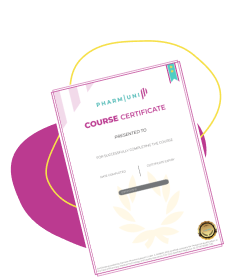QMS ISO (Quality Management System ISO)
Definition
QMS ISO refers to the set of international standards developed by the International Organization for Standardization (ISO) that define the requirements for a Quality Management System (QMS). These standards, particularly ISO 9001, provide a framework for organizations to ensure consistent quality in products and services, meet customer expectations, and comply with regulatory requirements.
In regulated industries such as pharmaceuticals and life sciences, ISO QMS standards are essential for achieving and maintaining ISO certification and ensuring ISO compliance throughout the product lifecycle.
Detailed Explanation
Understanding ISO QMS Standards
The ISO 9000 family of standards is the cornerstone of quality management systems. Among them, ISO 9001 is the most widely adopted and specifies the criteria for a QMS. It is applicable to any organization, regardless of size or industry, and focuses on customer satisfaction, continuous improvement, and risk-based thinking.
Key ISO QMS Standards
- ISO 9001: Specifies requirements for a QMS and is the basis for ISO certification.
- ISO 13485: Specific to medical devices, aligning QMS requirements with regulatory needs in the life sciences sector.
- ISO 14971: Focuses on risk management for medical devices and is often integrated with ISO 13485.
Importance of QMS ISO in Regulated Industries
In the pharmaceutical, biotechnology, and medical device sectors, maintaining a robust QMS is not only a best practice but a regulatory necessity. ISO certification demonstrates an organization’s commitment to quality, safety, and regulatory compliance. It also facilitates market access, especially in international markets where ISO standards are recognized globally.
Applications and Benefits
- Regulatory Compliance: Helps meet FDA, EMA, and other global regulatory requirements.
- Risk Management: Encourages proactive identification and mitigation of quality risks.
- Process Improvement: Drives efficiency and consistency across operations.
- Customer Confidence: Enhances credibility with clients, partners, and stakeholders.
- Audit Readiness: Prepares organizations for internal and external audits.
Example: ISO 13485 in Medical Devices
A medical device manufacturer seeking to sell products in the EU must comply with ISO 13485. This standard aligns closely with the Medical Device Regulation (MDR) and ensures the QMS addresses all stages of the product lifecycle, including design, development, production, and post-market surveillance.
ISO Certification Process
To achieve ISO certification, an organization typically undergoes the following steps:
- Gap analysis and planning
- Implementation of QMS policies and procedures
- Internal audit and management review
- Certification audit by an accredited body
- Continuous monitoring and recertification (typically every 3 years)
ISO Compliance vs. Certification
It is important to distinguish between ISO compliance and ISO certification. Compliance means aligning internal processes with ISO standards, while certification involves a formal assessment and approval by a third-party certification body. Both are valuable, but certification provides official recognition and often a competitive advantage.



